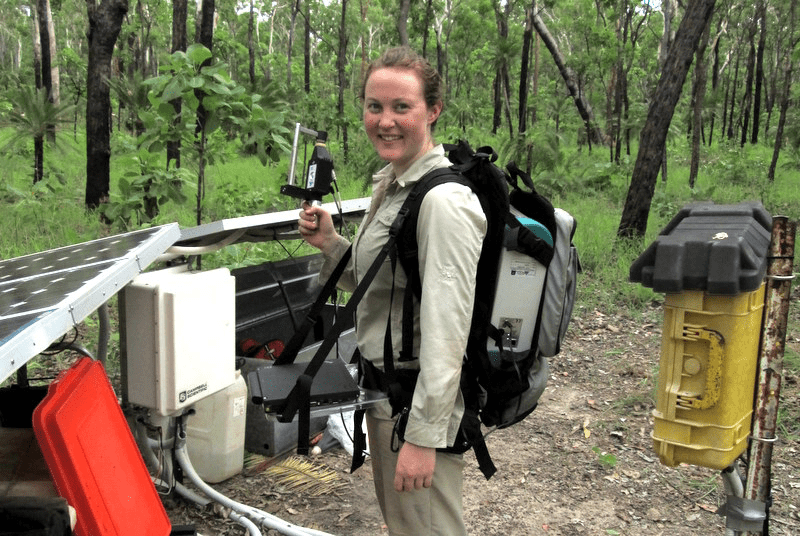TERN’s Ecosystem Modelling and Scaling Infrastructure (eMAST) is supporting ecosystem research in northern Australia through its engagement in a number of landmark carbon and water cycle projects. Foremost is the involvement of two eMAST team members, Dr Brad Evans and Dr Rhys Whitley of Macquarie University, in the Australian Research Council (ARC) Discovery project ‘Australian Tropical Savannas: Past, Present and Future’ led by Prof. Jason Beringer of Monash University. This project shares eMAST’s goal of improving the accuracy of land-surface model estimates of Australia’s carbon and water cycles. Data collected by TERN’s OzFluxfacility from the region allow crucial validation and development of models that will help us establish how savannas may respond under future global environmental change.
eMAST is also working with Monash University PhD student Caitlin Moore, co-supervised by Jason, Brad and Associate Professor Lindsay Hutley of Charles Darwin University, to disentangle seasonal dynamics between grass and tree layers of tropical savanna near Darwin. The team is using an array of state of the art sensors, including: a vegetation understory flux tower to collect data on energy transfers, spectrometers to measure light radiation, and imaging equipment to capture changes in the canopy. After just over a year of operation Caitlin’s initial results suggest her experiment has successfully captured the understory fluxes and improved our understanding of these unique ecosystems. This work is an excellent showcase of how TERN’s facilities collaborate, in this case integrating OzFlux data, eMAST models, and AusCover imagery.
In February eMAST continued its collaborative work by teaming up with researchers from CSIRO, Macquarie University, the National Computational Infrastructure (NCI), and US collaborators from NCAR and NEON to set-up and assimilate national ecosystem data and run a landmark land surface model. Key outputs generated by the model are detailed national data (1 km resolution), including root-zone moisture (for drought monitoring), gross primary production (for carbon stock assessments), and stomatal conductance (as the bridge between water and carbon cycles). More information on this project can be found here.
Recent publications:
Hutley, L.B., Evans, B.J., Beringer, J., Cook, G.D., Maier, S.M. and Razon, E., 2013, Impacts of an extreme cyclone event on landscape-scale savanna fire, productivity and greenhouse gas emissions, Environmental Research Letters, 8 (4), 045023. Available online.
Beringer, J., Evans, B.J., et al., 2014, Fire in Australian Savannas: from leaf to landscape, Global Change Biology. Accepted and available online soon.
Photo: Monash University PhD student Caitlin Moore preparing her equipment before heading out to measure light radiation using a hand-held spectrometer at TERN’s Howard Springs research station, south-east of Darwin. Caitlin’s measurements will be linked with similar ones taken by AusCover and the Australian SuperSite Network across northern Australia to help understand what’s happening at a larger scale (photo courtesy of Caitlin Moore).
Published in TERN newsletter March 2014







